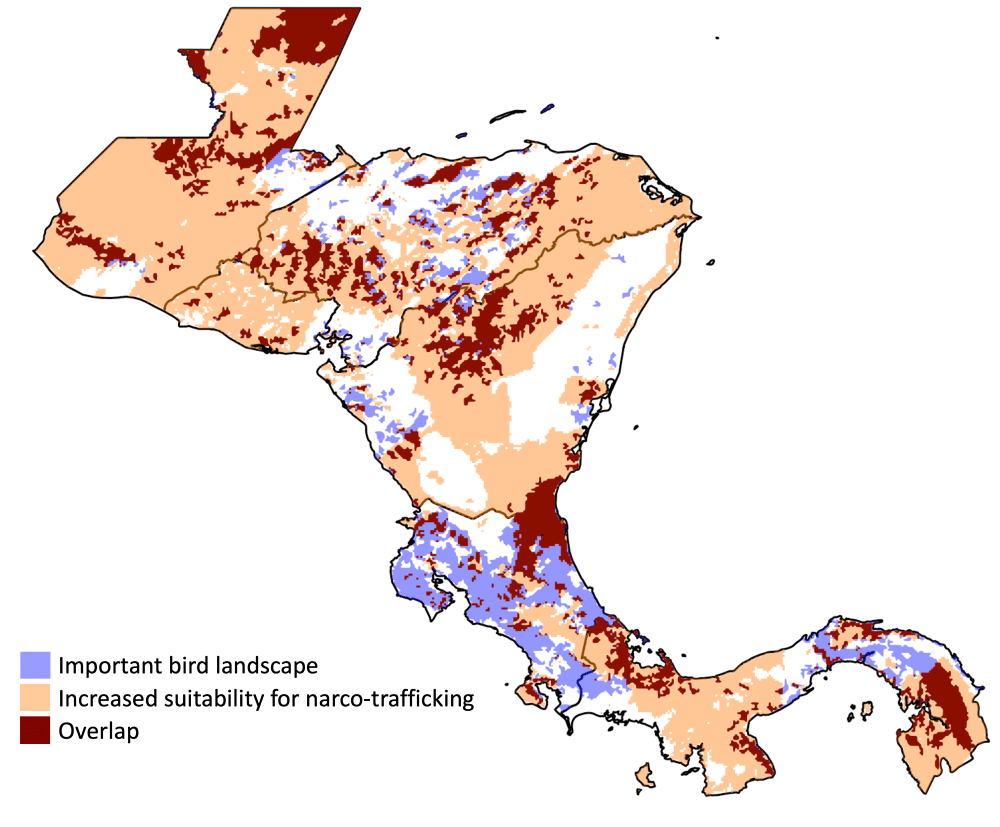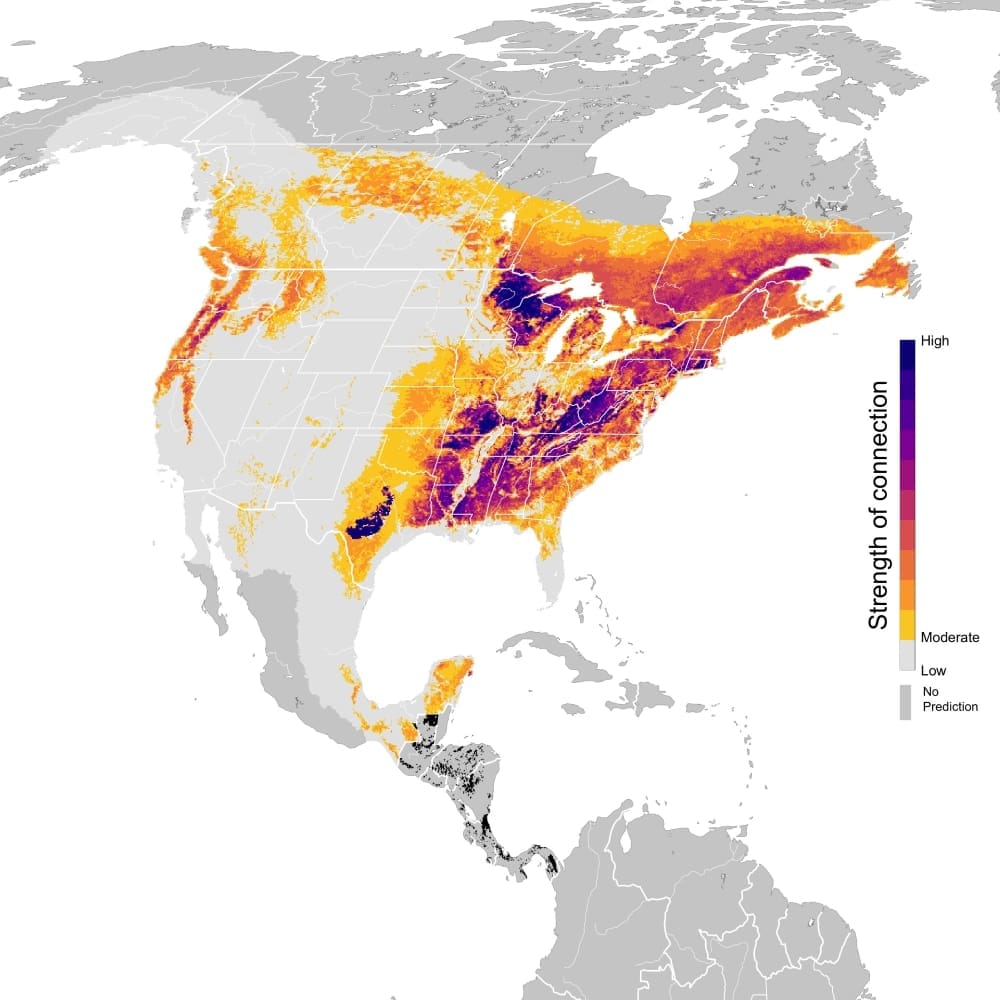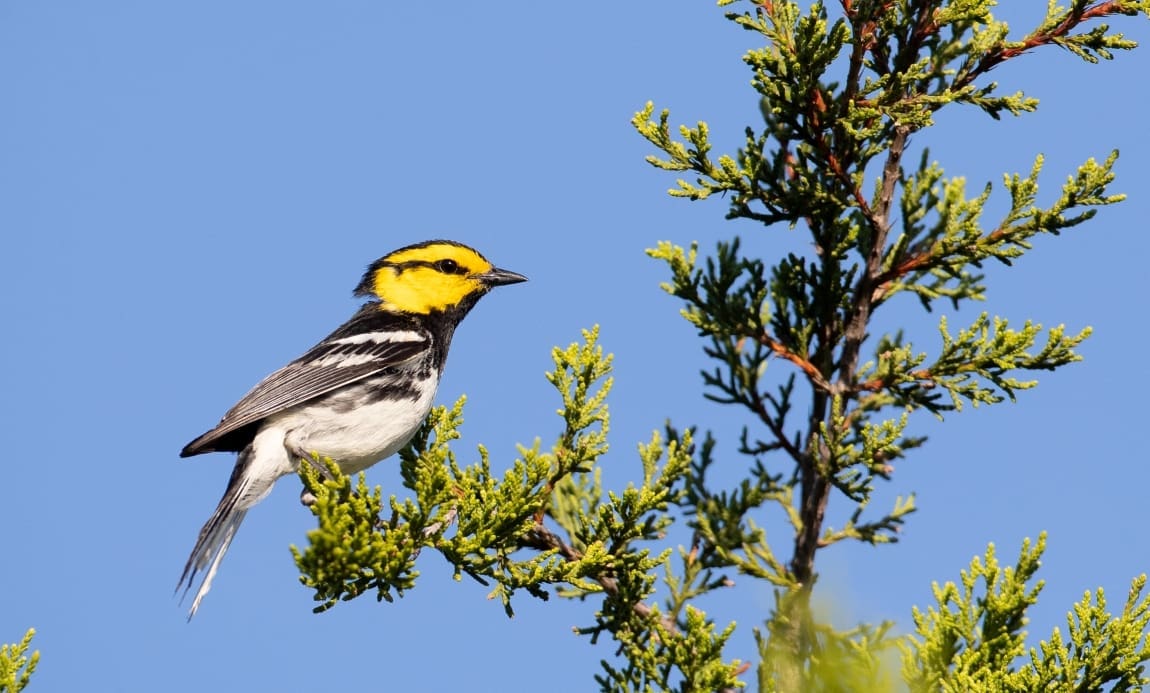By Pat Leonard Cornell Lab of Ornithology | Cornell University
In addition to its human consequences, cocaine trafficking harms the environment and threatens habitats important to dozens of species of migratory birds, according to a new study.
Two-thirds of the areas that are most important to forest birds – including 67 species of migratory birds that breed in the U.S. and Canada and overwinter in Central America – are at increased risk from cocaine trafficking activities, according to the study, ‘Intersection of Narco-Trafficking, Enforcement and Bird Conservation in the Americas’, published (June 12, 2024) in Nature Sustainability.
“When drug traffickers are pushed into remote forested areas, they clear land to create landing strips, roads and cattle pastures,” said lead author Amanda Rodewald, senior director of the Center for Avian Population Studies at the Cornell Lab of Ornithology. “Those activities – and the counterdrug strategies that contribute to them – can deforest landscapes and threaten species.”

In the study, scientists from four universities, as well as the U.S. Fish and Wildlife Service, combined measures of various landscape characteristics and concentrations of migratory birds in Central America to highlight the unexpected connection between a pervasive social problem and biodiversity.
More than half of the global population of one in five migratory species inhabit areas that became more attractive to trafficking following peak law enforcement pressure, measured as the volume of cocaine seized. For example, 90% of the world’s population of federally endangered golden-cheeked warblers and 70% of golden-winged warblers and Philadelphia vireos winter in those vulnerable landscapes.
The largest remaining forests in Central America, which are disproportionately inhabited by Indigenous people – known as the Five Great Forests – are seeing growing levels of cocaine trafficking.

“U.S. drug policy in Central America focuses on the supply side of the equation, and law-enforcement pressure plays a significant role in the movement of trafficking routes and locations of narco-deforestation,” said co-author Nicholas Magliocca, associate professor at the University of Alabama. “After 40 years that approach has not worked. In fact, cocaine trafficking has only expanded and become a worldwide network. It used to be that cocaine was just passing through Central America, but now it’s become a hub of global trans-shipment.”
This study builds upon previous ethnographic and modeling work done by Magliocca and a core group of researchers examining land-use conditions and decisions made by the traffickers themselves based on perceived risk and profit.
“This research gives an even fuller accounting of the harms caused by drug trafficking and the way we currently go about fighting it,” Magliocca said. “Adaptive behavior by the traffickers must be taken into consideration. You have to do more than reactively chase after the drug traffickers, who have nearly unlimited money and power in the region. No question it’s a complex, fluid and dangerous situation.”
“Incorporating measures that build capacity in local communities and governments to monitor and protect their forests, grow alternate forms of income, and resolve unclear land tenure would go a long way,” Rodewald said. “Our study is a reminder that we can’t address social problems in a vacuum because they can have unintended environmental consequences that undermine conservation.”
This research was conducted by the Cornell Lab of Ornithology, University of Alabama, Ohio State University, Northern Arizona University, and the U.S. Fish & Wildlife Service with funding from the Cornell Lab of Ornithology, Cornell University and NASA.
Original written by Pat Leonard, courtesy of the Cornell Chronicle, Cornell University.
More information: Amanda D. Rodewald, Anna Lello-Smith, Nicholas R. Magliocca, Kendra McSweeney, Matt Strimas-Mackey, Steven E. Sesnie, Erik A. Nielsen, ‘Intersection of narco trafficking, enforcement and bird conservation in the Americas’, Nature Sustainability (2024); DOI: 10.1038/s41893-024-01365-z; Cornell University – Press Release. Featured image: Nearly all of the world population of Golden-cheeked Warblers is at risk from cocaine trafficking. Credit: Ian Davies, Macaulay Library | Cornell Lab of Ornithology




